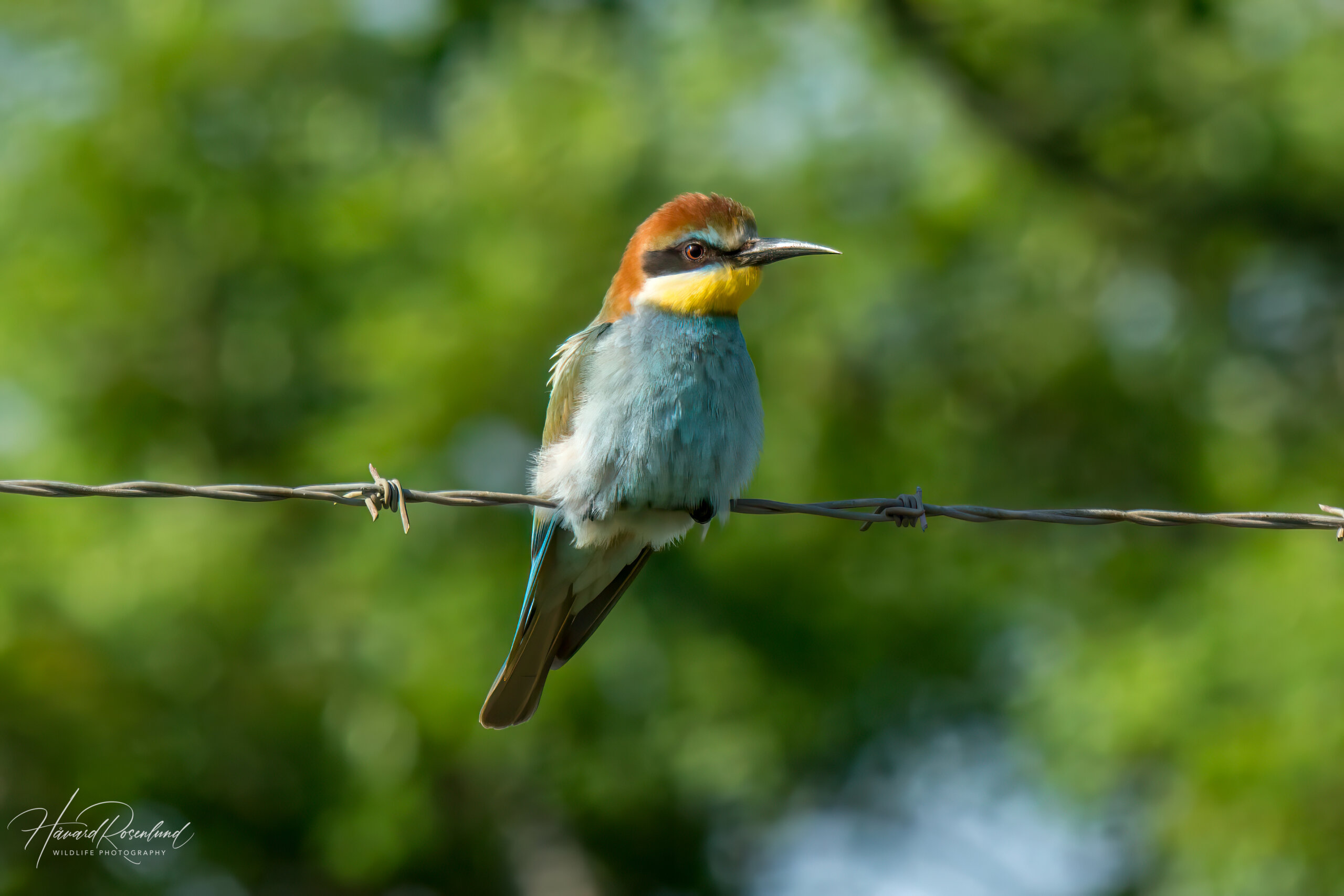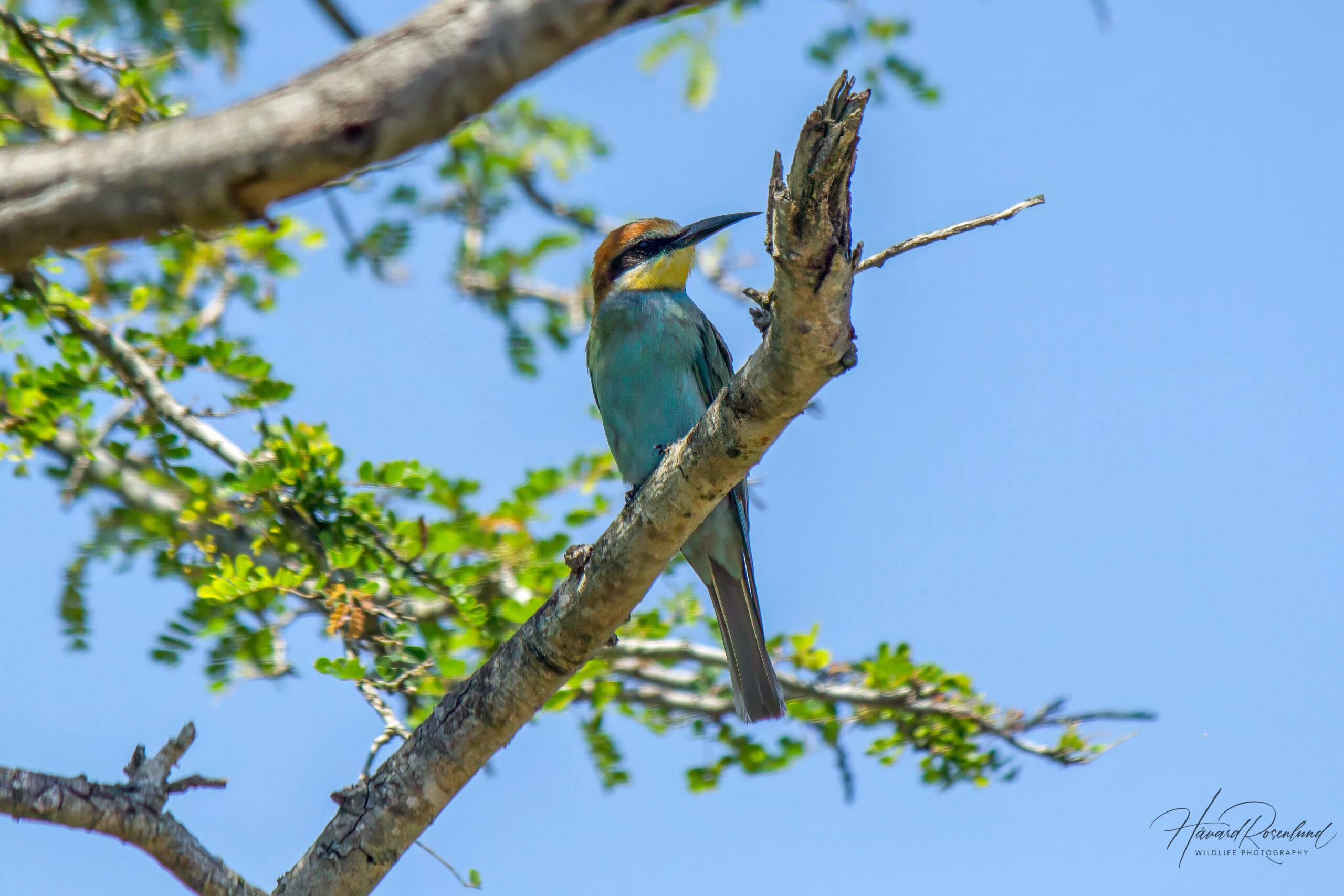Description
The European bee-eater (Merops apiaster) is a widespread migratory species of bee-eater. It reaches a length between 27-29 cm (10.6–11.4 in). It is a very colorful bird, as is common with bee-eaters. It has a bright yellow throat and turquoise underparts. Head and neck are brown, whereas back and wings are lighter brown to golden with green towards the wingtips and shoulder. It has a broad black eye-band and red eyes. Males and females are very similar, although females do occasionally have a green back. Juveniles have green back and wings. Breeding populations are found across southern Europe, in northern Africa and south-west Asia. During winter it migrates to sub-Saharan Africa. Some breeding populations are also found in southern Africa.
Diet & habitat
European bee-eaters prefer open landscapes, often with hilly terrain. Marshy grasslands with few trees are typical habitats. As the name suggests, large portions of the diet consist of bees, wasps, and hornets. Other flying insects, such as dragonflies, are also caught when the opportunity arises. Prey is typically caught in the air. The bee-eater first spots its prey sitting from an open perch. Then it swoops off to catch the insect before returning to the perch with its prey. Any stinger will be removed by repeatedly knocking the insect on a hard surface before it is eaten.
Migration
The widespread population that breeds in northern Africa and Eurasia moves to its wintering grounds in sub-Saharan Africa in October. They will stay here until March before they go back up north to breed. The second breeding population, which breeds in southern Africa, comes from western Africa to breed in September. They return north in January-February. This means that both populations of European bee-eater are in southern Africa at the same time, even though they breed at different locations and different time of year.
Social behavior & nesting
The European bee-eater is generally monogamous, but polygamy has been observed. They breed in groups of 10-30 pairs, but groups numbering over 100 pairs do happen. Breeding pairs often have the assistance of non-breeding adult individuals or juveniles. Assisting adults are typically sons of one or both parents or a brother of the breeding male who failed on his own attempt to breed earlier that same season. The nest is built by both parents and is a chamber with a tunnel dug into a riverbank, gully or a quarry made of dry clay. 2-6 eggs are laid and incubated by the female for 19-28 days. After hatching the chicks stay in the nest for 30-31 days before leaving. They will occasionally come back to the nest to roost.
Status
The European bee-eater is widespread and numbers over 4 million individuals throughout its range. It is, however, locally threatened in some areas due to an increase in agricultural practices, which leads to a reduction in available prey. There is one particular area in Israel, which the European bee-eater uses as a stop-over on its migration route, where there has been a sharp increase in agriculture. This has led to fewer prey, and the bee-eaters must stay longer to find enough food for the journey ahead. This might further lead to a delayed and unsuccessful breeding season. Due to its numbers and large distribution the European bee-eater is still listed as least concern on the IUCN Red List.









